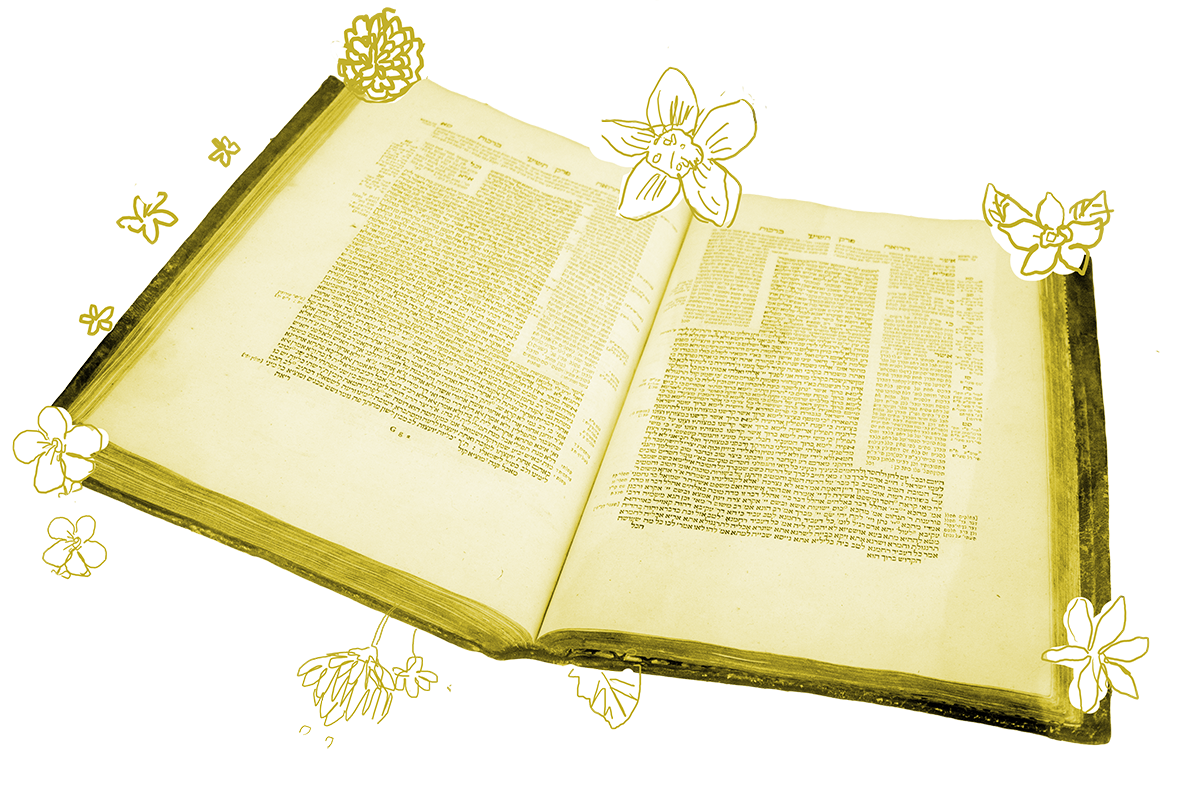Corpse impurity — becoming impure from direct or indirect contact with a dead body — was a big problem in ancient Judaism. The Torah prescribes a complex ritual for undoing it. It starts with an entirely red heifer (a very unusual coloring for a cow), as described in Numbers 19. According to the Torah, this red heifer must be completely free of blemish and never have experienced a yoke on its neck. The priests slaughter the red heifer, burn it entirely on the Temple altar and then mix the ashes with water to make a concoction usually translated as “water of lustration.” This concoction is then applied to impure people and objects with a hyssop branch in order to purify them.
The rabbis of the Talmud said that the red heifer was initially brought to the Temple but was then actually slaughtered on the Mount of Olives, which overlooked the Temple Mount. But there is a concern: If the red heifer was led from the Temple Mount to the Mount of Olives through the bustling city of Jerusalem, there was a risk that the officiating priests or (God forbid!) the red heifer itself, might encounter something that made it ritually impure. Remember: this relatively rare animal was necessary to reverse corpse impurity (a serious and unavoidable condition) — one did not want to risk messing this up!
And so, the Mishnah tells us that a special ramp was constructed so that the animal and the priests could bypass the city entirely, maintaining their purity all the way to the site of the ritual on the Mount of Olives. But setting aside the mechanics of this all-important ritual, today’s daf asks a far more practical but no less important question: who paid for the ramp?
Mishnah Shekalim 4:2 lists Temple items that were purchased from the communal funds. An initial view is that the ramp, like many other things we are reading about in this chapter, was constructed from communal funds. But the mishnah adds a dissenting opinion:
Abba Shaul says: The high priests construct the ramp for the red heifer from their own funds.
But why? The Gemara adds some amoraic commentary:
Rabbi Hanina said: There was great haughtiness among the high priests, as they would spend more than sixty talents of gold on it. This expenditure was unnecessary, as the previous ramp of the heifer was still standing. But not one of the high priests would take out his heifer on his fellow’s ramp. Rather, he would demolish it and build a new one from his own funds.
You may recall that the rabbis were ambivalent about the priesthood during the Second Temple period, which was in many cases more than a little corrupt. Or, as in this case, self-aggrandizing. According to Rabbi Hanina, each of the high priests insisted on building his own ramp for the red heifer just so he could show off his wealth and further cement his already lofty status. (As if a high priest needs to prove anything!)
Rabbi Ulla then raises a problem with Rabbi Hanina’s interpretation:
Wasn’t it taught that Simeon the Righteous performed the rites of two red heifers, and the ramp on which he took out this one he did not use again to take out that other one?
Although many high priests were corrupt and despised by the rabbis, Simeon the Righteous was, as his name suggests, actually a great one — even according to the rabbis. He helped restore the Temple and direct the Jewish people toward correct worship and a closer relationship with God. He gave us one of the most famous teachings in a rabbinic collection of greatest-hit teachings: Upon three things the world depends: Torah, service, and acts of kindness. (Pirke Avot 1:2) And according to the rabbis, during Simeon the Righteous’s tenure, many miracles were performed for Israel — including the discovery of not one but indeed two red heifers.
As Rabbi Ulla points out, Simeon the Righteous constructed new ramps for each of these red heifers. While we might be inclined to interpret each new high priest building their own ramp as some kind of status symbol, this interpretation can’t explain the behavior of Simeon the Righteous — who never would have done it for that reason. Rabbi Ulla thus offers a different explanation: that the ramps were constructed because of the importance and grandeur not of the high priest, but of the ceremony itself.
Interestingly, the later commentators make this whole debate moot. As the 15th century commentator Ovadiah of Bartenura notes in his commentary of the Mishnah: “the halakhah does not follow Abba Shaul.” The ramp, like so many other aspects of Temple service, is constructed from public funds.
Read all of Shekalim 11 on Sefaria.
This piece originally appeared in a My Jewish Learning Daf Yomi email newsletter sent on April 1st, 2021. If you are interested in receiving the newsletter, sign up here.


